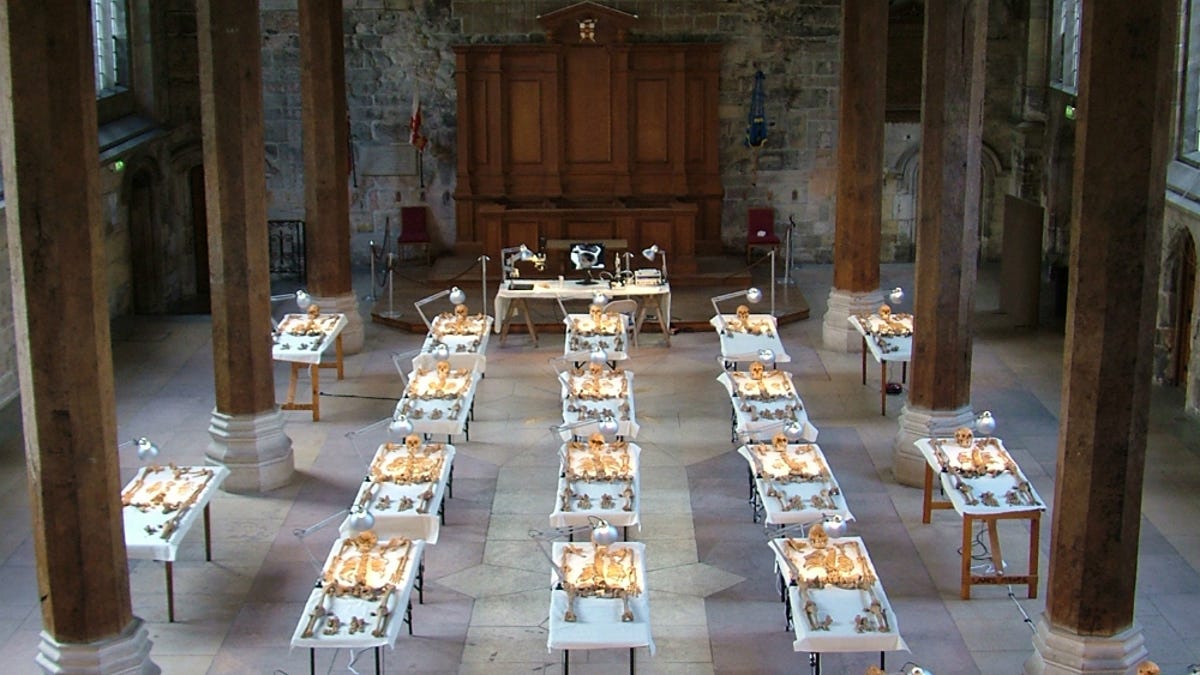Science reveals secret lives of mysterious decapitated gladiators
The skeletons of Roman-era fighters found in York, UK, have undergone genome analysis to determine their origin.
For the past decade, a mystery has hovered over the UK city of York. From 2004 to 2005, 80 skeletons were unearthed from the gardens at a house on Driffeld Terrace. These skeletons were dated to sometime between the first and fourth centuries AD, during which time York was under Roman control.
These skeletons have several peculiar idiosyncrasies. At least 75 were adult male skeletons, all under the age of 45, around an inch taller than the Roman average and well built. This demographic alone is unusual for a Roman cemetery of the era. But the manner in which the remains were buried was oddest of all. The heads had been removed, placed in the graves on the chests or between the legs of the bodies.
In 2010, evidence emerged that the bodies were probably gladiators. Forensic work conducted on the bones revealed one man had been bitten by a large carnivore, such as a lion or bear, which were fought by gladiators in the arena. Another skeleton showed signs of a massive hammer blow to the head, a method of mercy killing delivered to badly wounded fighters.
The bones also showed that the men had much stronger right arms than left, which was normal for slaves trained to fight in the arena from childhood. In addition, the bones showed evidence of childhood stress and deprivation, which would be expected for gladiatorial slaves, and healed wounds that suggested lives well used to injury and fighting.
A team at Trinity College Dublin led by Dan Bradley, professor of population genetics, selected seven skeletons from the 80 for genomic analysis. Their research appears in the journal Nature Communications.
"Archaeology and osteoarchaeology can tell us a certain amount about the skeletons, but this new genomic and isotopic research can not only tell us about the body we see, but about its origins, and that is a huge step forward," said Christine McDonnell, Head of Curatorial and Archive Services for York Archaeological Trust, which found the skeletons.
One of the skeletons, carefully excavated, in the position in which it was found.
Most of the skeletons sampled had similar genomes to those of a female Iron Age skeleton from Melton in East Yorkshire, suggesting that some of the men had lived most of their lives in Britain. And a small variation in isotope levels showed that some had started their lives elsewhere, but had been in Britain since early childhood.
All but one of the men had brown eyes and dark hair, but one was found to have had blonde hair and blue eyes, which indicates Anglo Saxon heritage.
One skeleton of the seven was a surprise, though. According to the genomic analysis, he was from the Middle East. He had grown up in what is now Palestine, Jordan or Syria, and migrated across to the UK as an adult. How he came to his life and death as a gladiator is a mystery.
But perhaps he wasn't a gladiator at all. Although the burial ground demonstrated a demographic consistent with what is thought to be a gladiator cemetery at Ephesus, it's also possible that the men were soldiers with the Roman army.
"Whichever the identity of the enigmatic headless Romans from York, our sample of the genomes of seven of them, when combined with isotopic evidence, indicate six to be of British origin and one to have origins in the Middle East," Bradley said. "It confirms the cosmopolitan character of the Roman Empire even at its most northerly extent."


